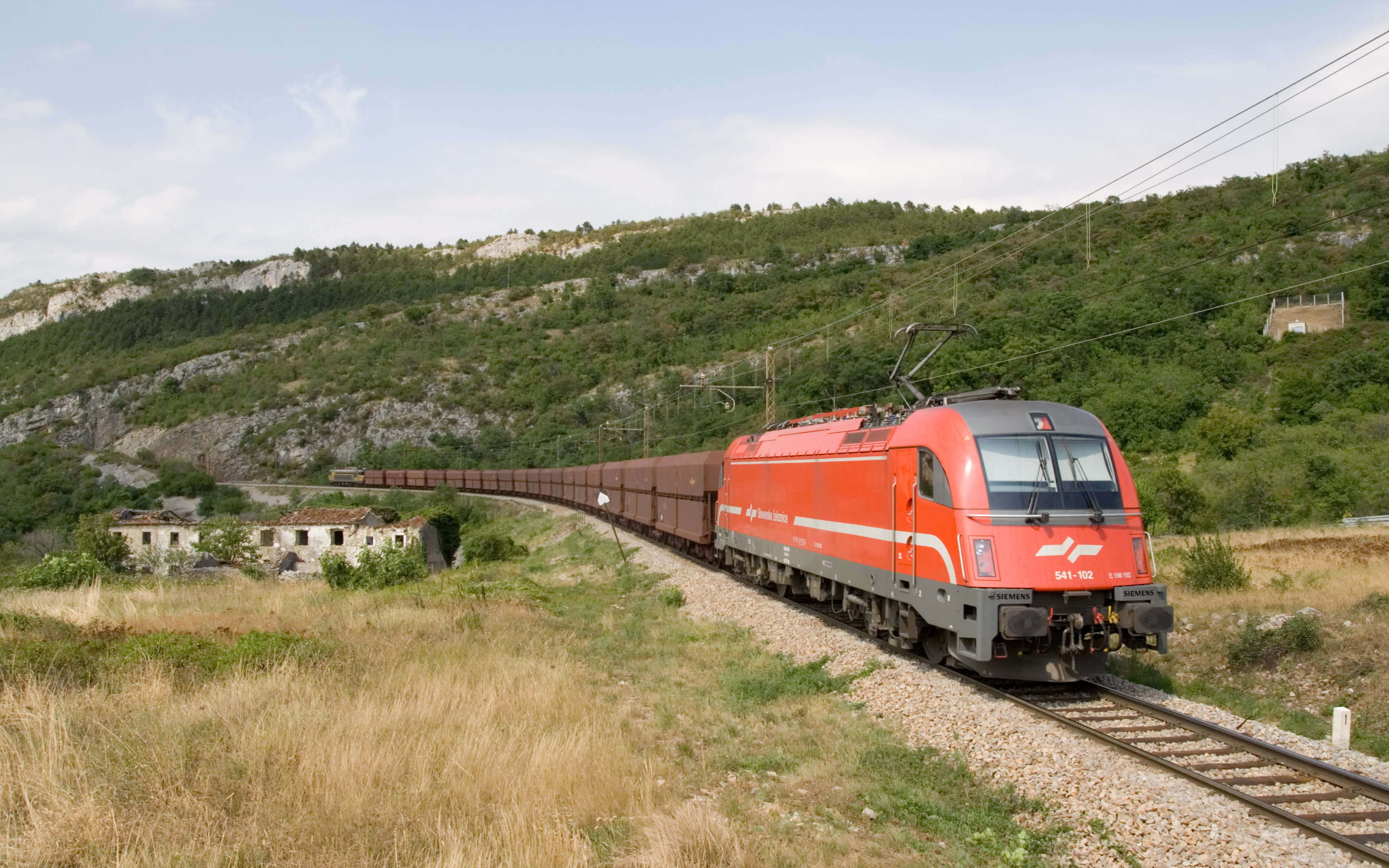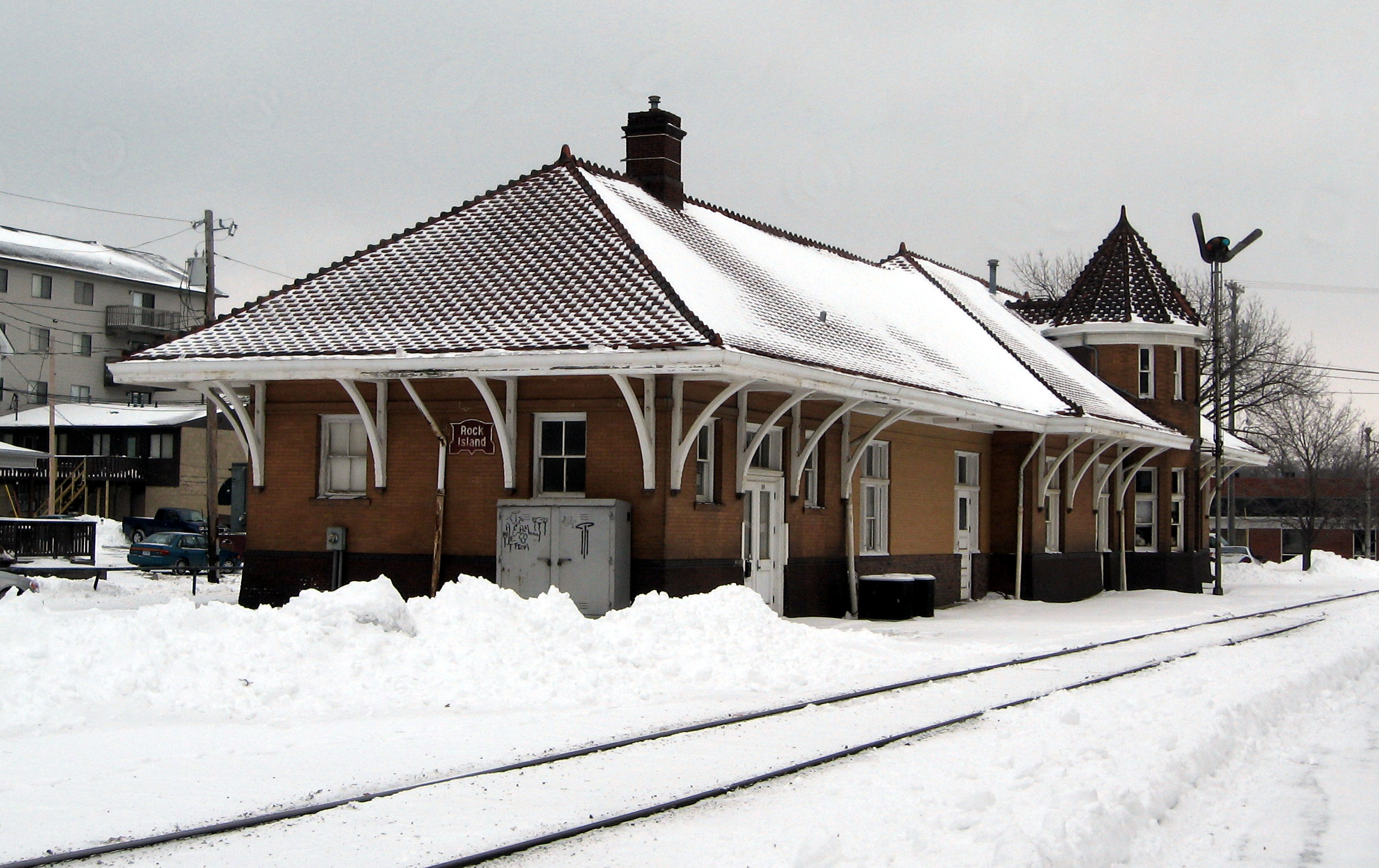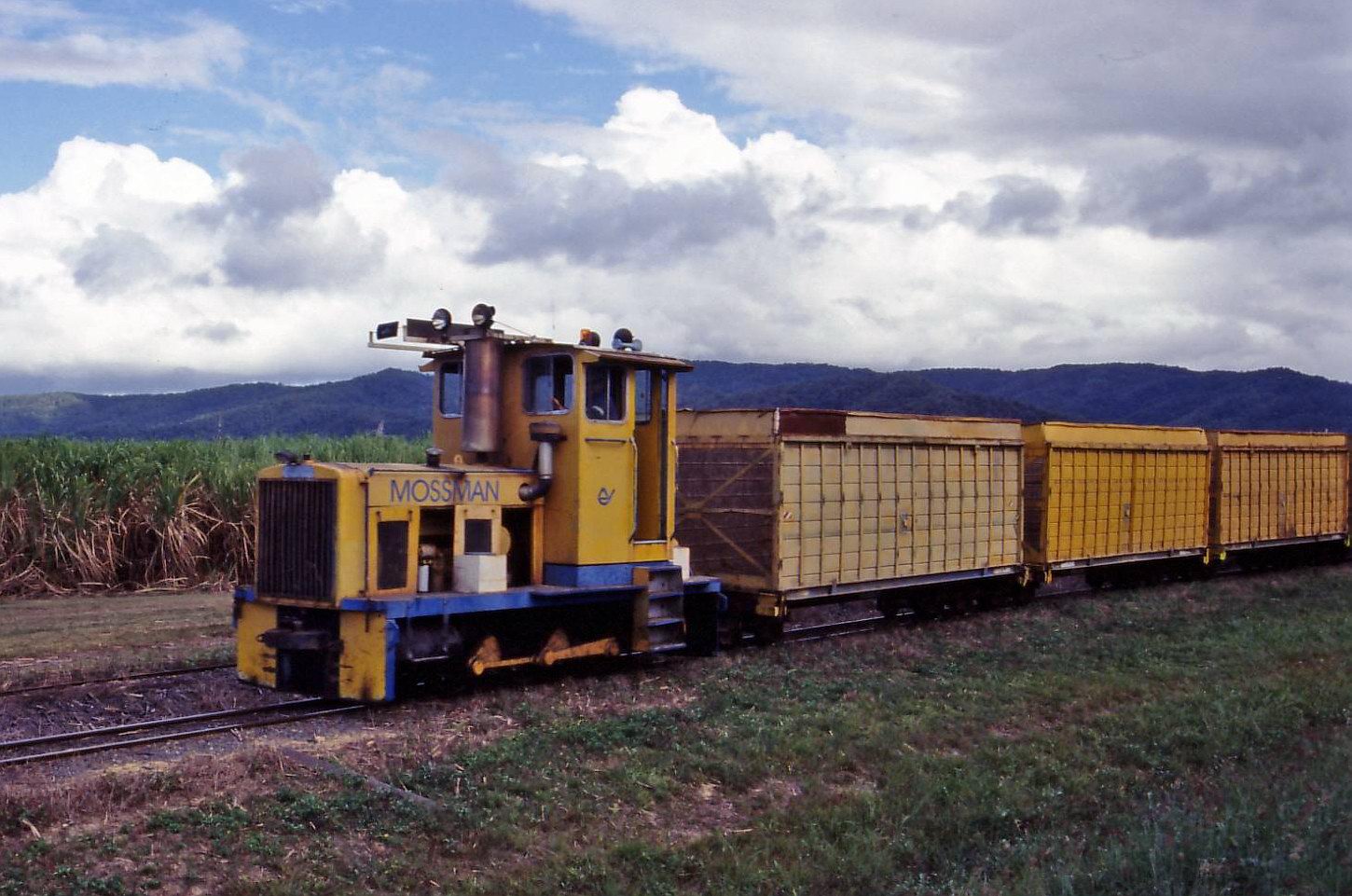|
Cow–calf
In rail transport, a cow–calf (also cow and calf, or in the master and slave) is a set of diesel switcher locomotives. The set is usually a pair, though a few three-unit sets (with two calves, also known as ''herds'') were built. A cow is equipped with a cab, and a calf is not. The two are coupled together (either with regular couplers or a semi-permanent drawbar) and equipped with multiple unit train control so that both locomotives can be operated from the single cab. A cow is analogous to an ''A unit'', i.e. a locomotive with a cab, and a calf to a '' B unit'', i.e. a powered, cabless road locomotive. That is, the cow and calf are each equipped with at least one prime mover for propulsion. A cow–calf set is distinct from a ''slug-and-mother'' set in that a cow and a calf are each independently powered while a ''slug'' has no prime mover and instead is dependent on power from its ''mother'' unit. Like the early EMD FT locomotives, cow–calf sets were typically b ... [...More Info...] [...Related Items...] OR: [Wikipedia] [Google] [Baidu] |
Diesel Locomotive
A diesel locomotive is a type of railway locomotive in which the prime mover (locomotive), power source is a diesel engine. Several types of diesel locomotives have been developed, differing mainly in the means by which mechanical power is conveyed to the driving wheels. The most common are diesel–electric locomotives and diesel–hydraulic. Early internal combustion engine, internal combustion locomotives and railcars used kerosene and gasoline as their fuel. Rudolf Diesel patented his first compression-ignition engine in 1898, and steady improvements to the design of diesel engines reduced their physical size and improved their power-to-weight ratios to a point where one could be mounted in a locomotive. Internal combustion engines only operate efficiently within a limited power band, and while low-power gasoline engines could be coupled to mechanical transmission (mechanics), transmissions, the more powerful diesel engines required the development of new forms of transmiss ... [...More Info...] [...Related Items...] OR: [Wikipedia] [Google] [Baidu] |
B Unit
A B-unit, in railroad terminology, is a locomotive unit (generally a diesel locomotive) which does not have a control cab or crew compartment, and must therefore be operated in tandem with another coupled locomotive with a cab (an A-unit). The terms booster unit and cabless are also used. The concept is largely confined to North America and post-Soviet countries. Elsewhere, locomotives without driving cabs are rare. A B-unit is distinct from a slug unit, which only has traction motors and in certain instances may have a cab. The term primarily is applied to freight locomotives, but can be applied to passenger multiple units as well in some cases for when motor cars are put in the middle of trains. In practice however, the term is rarely used to describe multiple unit trains, and in many circumstances the non-cab cars are directly or indirectly permanently attached to a cab car. Controls Some B-units cannot be moved without a controlling unit attached, but most have some ... [...More Info...] [...Related Items...] OR: [Wikipedia] [Google] [Baidu] |
Slug (railroad)
In railroading, a slug is a version of a diesel–electric locomotive which lacks a Prime mover (locomotive), prime mover and often a cab. It derives the electrical power needed to operate its traction motors and motor controls from a fully-powered mother locomotive. At low speeds the drawing (or regenerative braking, braking) force a diesel–electric locomotive can produce is often limited by its traction motors or the grip of its drive wheels on the track, not the capability of its diesel engine(s). A slug adds more traction motors and drive wheels to both use more of the power the mother's engine can produce that cannot otherwise be used at low speeds and provide better braking, without the expense of a full locomotive. A slug is distinct from a B unit, which has both a prime mover and traction motors but no cab. A slug may have an operator's cab to allow engineers to operate a train with the slug in the lead, or the cab and much of the body can be omitted to reduce cost an ... [...More Info...] [...Related Items...] OR: [Wikipedia] [Google] [Baidu] |
Classification Yard
A classification yard (American English, as well as the Canadian National Railway), marshalling yard (British, Hong Kong, Indian, and Australian English, and the former Canadian Pacific Railway) or shunting yard (Central Europe) is a railway yard used to accumulate railway cars on one of several tracks. First, a group of cars is taken to a track, sometimes called a ''lead'' or a ''drill''. From there, the cars are sent through a series of switches called a ''ladder'' onto the classification tracks. Some larger yards may put the lead on an artificially built hill called a ''hump'' to use the force of gravity to propel the cars through the ladder. Freight trains that consist of unrelated cars must be made into a train grouped according to their destinations; this shunting is done at the starting point. Some trains drop and pick up cars along their route in classification yards or at industrial sidings. In contrast is a unit train that carries, for example, automobiles from the ... [...More Info...] [...Related Items...] OR: [Wikipedia] [Google] [Baidu] |
B Unit
A B-unit, in railroad terminology, is a locomotive unit (generally a diesel locomotive) which does not have a control cab or crew compartment, and must therefore be operated in tandem with another coupled locomotive with a cab (an A-unit). The terms booster unit and cabless are also used. The concept is largely confined to North America and post-Soviet countries. Elsewhere, locomotives without driving cabs are rare. A B-unit is distinct from a slug unit, which only has traction motors and in certain instances may have a cab. The term primarily is applied to freight locomotives, but can be applied to passenger multiple units as well in some cases for when motor cars are put in the middle of trains. In practice however, the term is rarely used to describe multiple unit trains, and in many circumstances the non-cab cars are directly or indirectly permanently attached to a cab car. Controls Some B-units cannot be moved without a controlling unit attached, but most have some ... [...More Info...] [...Related Items...] OR: [Wikipedia] [Google] [Baidu] |
Belt Railway Of Chicago
The Belt Railway Company of Chicago , headquartered in Bedford Park, Illinois, is the largest switching terminal railroad in the United States. It is co-owned by the six Class I railroads of the United States — BNSF, Canadian National, CPKC (the BRC's north–south main line's northern terminus is, like the Indiana Harbor Belt, the Milwaukee District West Line in Chicago's Cragin neighborhood), CSX, Norfolk Southern and Union Pacific — each of which uses the switching and interchange facilities of the BRC. Owner lines and other railroads bring their trains to the Belt Railway to be separated, classified, and re-blocked into new trains for departure. The BRC also provides rail terminal services to approximately 100 local manufacturing industries. The company employs about 440 people, including its own police force. BRC trackage The BRC has 28 miles (45 km) of mainline route with interchanges to each of its owner railroads, and over 300 miles (500 km) of ... [...More Info...] [...Related Items...] OR: [Wikipedia] [Google] [Baidu] |
Kelso, California
Kelso is a ghost town A ghost town, deserted city, extinct town, or abandoned city is an abandoned settlement, usually one that contains substantial visible remaining buildings and infrastructure such as roads. A town often becomes a ghost town because the economi ... and defunct railroad depot in the Mojave National Preserve in San Bernardino County, California, USA. It was named after railroad worker John H. Kelso, whose name was placed into a hat along with two other workers to decide the name of the town. The town was built in 1905 specifically as a railroad station along the rail line between Utah and Los Angeles, originally called "Siding 16," because of its location and nearby springs that provided abundant water. ''Historic Spots in California'' states, "At Kelso stands a beautiful Spanish-style Union Pacific Depot built about 1906, surrounded by shade trees, a welcome rarity in the hot, barren desert." History Starting off as what was a simple train depot in t ... [...More Info...] [...Related Items...] OR: [Wikipedia] [Google] [Baidu] |
Helper Locomotive
A bank engine (United Kingdom/Australia) (colloquially a banker), banking engine, helper engine or pusher engine (North America) is a railway locomotive that temporarily assists a train that requires additional power or traction to climb a gradient (or ''bank''). Helpers/bankers are most commonly found in mountain divisions (called "helper districts" in the United States), where the ruling grade may demand the use of substantially greater motive power than that required for other grades within the division. Historic practice Helpers/bankers were most widely used during the age of steam, especially in the American West, where significant grades are common and trains are long. The development of diesel-electric or electric locomotives has eliminated the everyday need for bankers/helpers in all but a few locations. With the advent of dynamic brakes on electric or diesel-electric locomotives, helpers/bankers can also be used to provide more braking force on long downhill gradi ... [...More Info...] [...Related Items...] OR: [Wikipedia] [Google] [Baidu] |
Iowa Interstate Railroad
The Iowa Interstate Railroad is a Class II railroad, Class II regional railroad operating in the central United States. The railroad is owned by Railroad Development Corporation of Pittsburgh, Pennsylvania. History The railroad was formed on November 2, 1984, using former Chicago, Rock Island & Pacific Railroad rail tracks, tracks between Chicago, Illinois, and Omaha, Nebraska, four years after the Rock Island folded. It was in partnership with real estate firm Heartland Rail Corporation that the IAIS was able to operate. Heartland purchased the Right-of-way (railroad), right-of-way and infrastructure for United States dollar, $31 million (of which, $15 million was a loan from the Iowa Railway Finance Authority), and then leased it to IAIS for operations. The IAIS and the railroad infrastructure were purchased from Heartland by Railroad Development Company of Pittsburgh, Pennsylvania, in 2003. In recognition of the railroad's Rock Island Railroad heritage, the IAIS logo uses a ... [...More Info...] [...Related Items...] OR: [Wikipedia] [Google] [Baidu] |
Union Pacific Railroad
The Union Pacific Railroad is a Railroad classes, Class I freight-hauling railroad that operates 8,300 locomotives over routes in 23 U.S. states west of Chicago and New Orleans. Union Pacific is the second largest railroad in the United States after BNSF Railway, BNSF, with which it shares a duopoly on transcontinental freight rail lines in the Western United States, Western, Midwestern United States, Midwestern and West South Central states, West South Central United States. Founded in 1862, the original Union Pacific Rail Road was part of the first transcontinental railroad project, later known as the Overland Route (Union Pacific Railroad), Overland Route. Over the next century, UP absorbed the Missouri Pacific Railroad, the Western Pacific Railroad, the Missouri–Kansas–Texas Railroad and the Chicago, Rock Island and Pacific Railroad. In 1995, the Union Pacific merged with Chicago and North Western Transportation Company, completing its reach into the Upper Midwest. In ... [...More Info...] [...Related Items...] OR: [Wikipedia] [Google] [Baidu] |
General Motors Corporation
General Motors Company (GM) is an American multinational automotive manufacturing company headquartered in Detroit, Michigan, United States. The company is most known for owning and manufacturing four automobile brands: Chevrolet, Buick, GMC, and Cadillac, each a separate division of GM. By total sales, it has continuously been the largest automaker in the United States, and was the largest in the world for 77 years before losing the top spot to Toyota in 2008. General Motors operates manufacturing plants in eight countries. In addition to its four core brands, GM also holds interests in Chinese brands Baojun and Wuling via SAIC-GM-Wuling Automobile. GM further owns a namesake defense vehicles division which produces military vehicles for the United States government and military, the vehicle safety, security, and information services provider OnStar, the auto parts company ACDelco, and a namesake financial lending service. The company originated as a holding company f ... [...More Info...] [...Related Items...] OR: [Wikipedia] [Google] [Baidu] |
Two Foot Gauge Railways In Australia
A list of narrow-gauge railways in Australia. Installations See also * 2 ft and 600 mm gauge railways *Heritage railway * Narrow-gauge railways in Australia *Railways on the West Coast of Tasmania The history of the railways on the West Coast of Tasmania has fascinated enthusiasts from around the world, because of the combination of the harsh terrain in which the railways were created, and the unique nature of most of the lines. Points o ... References External linksQueensland sugar cane railways today {{Navbox track gauge Narrow-gauge railways in Australia ... [...More Info...] [...Related Items...] OR: [Wikipedia] [Google] [Baidu] |










